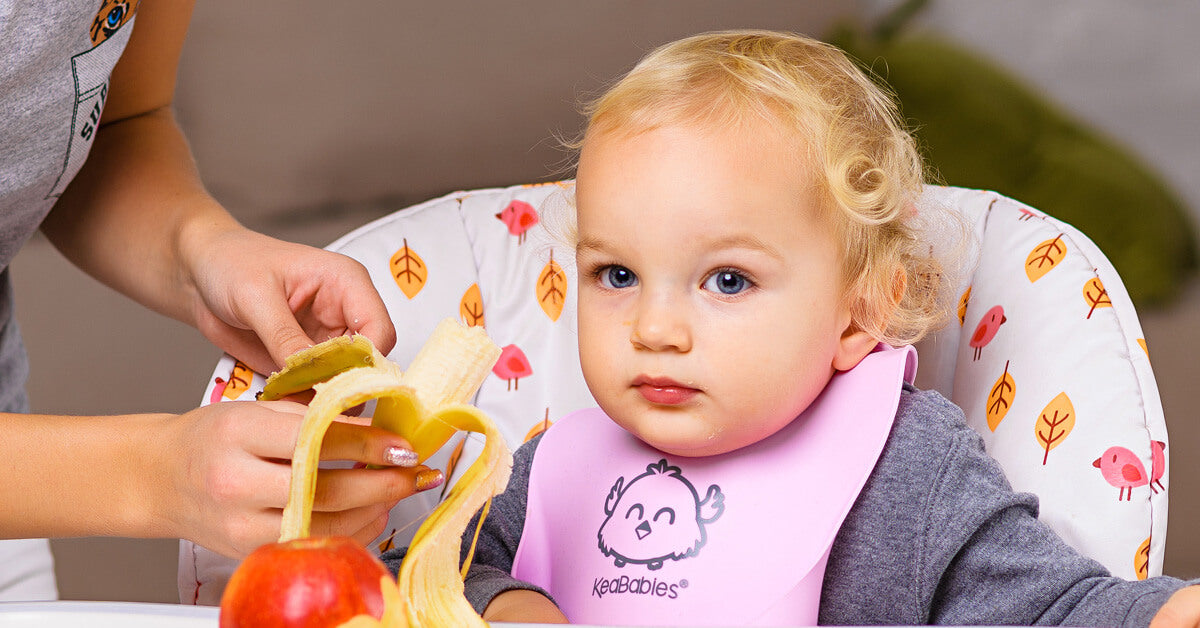
The Modern Mama’s Guide To Starting Solids
As your baby gets older and begins eyeing your meal as you sit down to eat, you may wonder when your child can start solids. While some doctors may...As your baby gets older and begins eyeing your meal as you sit down to eat, you may wonder when your child can start solids. While some doctors may recommend starting solids earlier, the American Academy of Pediatrics recommends beginning solid food “around 6 months of age,” and to expose your baby to a variety of healthy foods and textures. There are many conditions and special cases where a baby may begin solid foods earlier or later than 6 months, so always discuss with your pediatrician before starting your child on solid food.
The American Academy of Pediatrics’ recommendations include the following:
-
Exclusively breastfeeding until your baby is 6 months old
-
Beginning solids around 6 months old
-
Introduce baby to a variety of tastes and textures
-
Around 9 months old, offer your baby 2-3 healthy snacks per day
-
Foster self-feeding skills by teaching your baby how to use a spoon and a cup
-
Help your baby recognize their hunger and satiety levels
-
Give your baby only breast milk or formula to drink for the first year and avoid sugar-sweetened beverages such as juice (at least until 6-9 months)
How do you know if your baby is ready for solid foods? He should meet these criteria:
-
End of the tongue-thrust reflex
-
Full head and neck control
-
Can sit with support or unassisted
-
Seems interested in what you are eating
-
Mouths/makes eating motions with his mouth
There are two main methods of introducing solids: baby-led weaning and traditional weaning. Note that neither of these methods has anything to do with weaning from breastfeeding! Baby should always rely on breast milk or formula as the foundation of their nutrition until one year of age. Traditional weaning refers to introducing solid food to your baby in the form of purees and/or infant cereals. In traditional weaning, parents spoon-feed their babies very soft or pureed foods. Baby-led weaning refers to the method of introducing table foods to your baby in age-appropriate shapes and textures. In baby-led weaning, your baby is encouraged to self-feed, and parents take a more hands-off approach during mealtime.
What foods should your baby eat as you introduce solids?
- Steamed, soft fruits and vegetables
- Foods low in sodium and sugar
- Teething crackers/biscuits
- Pureed fruits and vegetables
- Finely-chopped finger foods
Foods to avoid as your baby starts solids:
- Honey
- Foods high in sodium
- Highly-processed foods
- Sugary foods or drinks
- Popcorn
- Raw nuts
- Cow’s milk (as a substitute for breast milk or formula)
For many years, doctors recommended starting babies on solids by introducing rice cereal. However, recent research shows that rice cereal may not be a necessary stepping stone in your baby’s development. The main concern with rice cereal is exposure to arsenic, a known carcinogen that increases the risk of cardiovascular and immune diseases. Even in tiny quantities, arsenic can be very dangerous to babies. It is not recommended to add rice cereal to bottles as a way to make your baby sleep longer. Although rice cereal is easy to digest and a relatively low-risk food in relation to food allergies, always discuss with your child’s pediatrician whether the nutritional benefit outweighs the risks.
Most doctors no longer recommend avoiding allergens, unless there is a family history of food allergies. Discuss with your baby’s pediatrician how and when to introduce foods like fish, eggs, wheat, soy, and nuts. Another way to pinpoint food sensitivities and/or allergies is to use the “three-day rule,” in which you introduce one new food every three days to watch your child for any reactions (such as rashes, difficulty breathing, or changes in bowel movements).
There are many ways to make mealtime enjoyable and manageable for you and your little one! Always feed the baby in a safe, proper chair and keep them buckled in. Don’t feed the baby in a reclined position. Encourage your baby to explore foods – even if that means getting a little messy! Allowing your baby to play with her food can further her development. A KeaBabies Bandana Bib can make quick cleanups easier! Be sure that finger foods are soft and break down into small pieces to avoid choking hazards. Introduce a cup and utensils, too. You can give your baby “pre-loaded” spoons with food already on them, and help her bring the spoon to her mouth. Offer an ounce or two of water during meals as well. And remember, don’t ever force-feed your baby! There will be some days when her appetite is bigger, and other times when she refuses solids altogether. Don’t turn mealtime into a power struggle. Learning to eat a proper meal takes time and patience.
Follow these tips, and your little one will be a champion eater in no time! Always go at your baby’s unique pace, and choose a method of starting solids that work best for you and your family.


























































